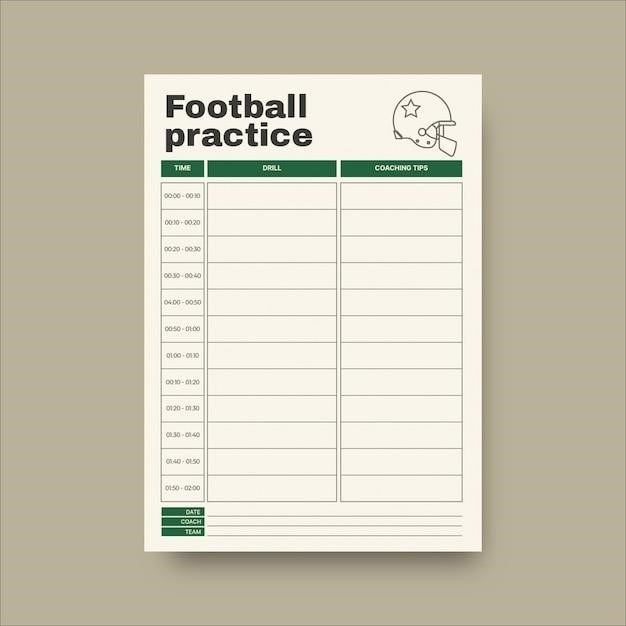The Illustrated Guide to Monster Girls⁚ An Overview
This guide explores the captivating world of monster girls, examining diverse art styles and character designs. From existing artbooks like “Monster Girl Encyclopedia” to individual artist contributions, we delve into the genre’s rich history and enduring appeal. Discover the origins of popular designs and the unique features that define these captivating characters.
Existing Monster Girl Artbooks
The world of monster girl art boasts a diverse range of published works, catering to various tastes and styles. One prominent example is the “Monster Girl Encyclopedia” series by Kenkou Cross, a comprehensive collection showcasing a wide array of monster girl designs. These artbooks offer detailed illustrations and sometimes accompanying lore, providing a deep dive into the creative process behind these captivating characters. Other notable titles include fan-made compilations featuring artwork from various artists, often showcasing a variety of monster girl interpretations. These independent publications offer a glimpse into the vibrant and ever-evolving community surrounding this unique genre. The availability of these artbooks, both official and fan-created, demonstrates the significant impact and popularity of monster girl art within the broader artistic landscape. The accessibility of these books, online and in physical stores, has contributed significantly to the expansion and evolution of the genre, encouraging both established and aspiring artists to explore the creative possibilities within this niche.
Notable Artists and Their Contributions
The vibrant world of monster girl art owes much to the diverse talents of numerous artists. Kenkou Cross, creator of the “Monster Girl Encyclopedia,” stands out for their extensive and influential work, defining a significant portion of the genre’s visual language. Araya Kouki’s contributions to the “Monster Girl Encyclopedia” art book also deserve recognition for their unique artistic style and detailed character designs. Beyond these prominent names, countless independent artists have enriched the genre with their own unique interpretations and styles. These artists often share their work online, fostering a collaborative and supportive community where new styles and interpretations constantly emerge. The collective creativity of these individuals is crucial to the ongoing evolution and expansion of the monster girl aesthetic, pushing boundaries and inspiring new generations of artists to explore this fascinating subject matter. Their varied approaches to character design, illustration techniques, and storytelling contribute to the genre’s multifaceted appeal and its remarkable longevity.
Popular Monster Girl Designs and Their Origins
The diverse array of monster girl designs draws inspiration from a rich tapestry of mythological creatures and folkloric beings. From classic depictions of succubi and harpies to more modern interpretations of mythical creatures like dragons and werewolves, the designs often blend human features with fantastical elements. The “Monster Girl Encyclopedia” series, for example, showcases a wide range of creatures, each with unique characteristics and backstories. These designs are often influenced by anime and manga styles, resulting in a visual aesthetic that’s both whimsical and alluring. The popularity of specific designs often stems from a combination of visual appeal and inherent narrative potential. A character’s unique features, such as a dragon’s tail or a harpy’s wings, can instantly convey a sense of power, mystery, or vulnerability, adding depth and complexity to their personality and story. This careful consideration of design elements allows for the creation of memorable characters that resonate with audiences on both aesthetic and emotional levels. The ongoing evolution of these designs ensures that the genre remains fresh and exciting.

Exploring the Monster Girl Genre
This section delves into the diverse subgenres and common themes within monster girl media, analyzing the unique appeal of these captivating characters and their enduring popularity in various forms of entertainment.
Subgenres and Variations Within Monster Girls
The monster girl genre boasts incredible diversity, extending far beyond a simple categorization. We see variations in the types of monsters incorporated, ranging from classic creatures like vampires and werewolves to more fantastical beings such as harpies and succubi. Each monster type brings unique characteristics—physical attributes, abilities, and even cultural connotations—that significantly influence the character’s portrayal. Furthermore, the level of “monster-ness” varies widely. Some monster girls retain only subtle hints of their monstrous heritage, perhaps pointed ears or unusual eyes, while others exhibit dramatic transformations, showcasing scales, claws, or wings. The setting also plays a crucial role, influencing how these characters are perceived and interact with the world around them. A monster girl in a modern urban setting will have different experiences and challenges than one living in a fantasy realm. This blend of established monster lore and creative freedom allows for an almost limitless range of character designs and narratives, making the genre so endlessly fascinating and appealing.
Common Tropes and Themes in Monster Girl Media
Recurring themes and tropes frequently appear in monster girl media, contributing to the genre’s unique charm and appeal. One common trope involves the juxtaposition of monstrous features with traditionally feminine qualities, creating an intriguing contrast that often explores themes of beauty, acceptance, and overcoming prejudice. The “fish-out-of-water” narrative is also prevalent, placing monster girls in human societies where they must navigate cultural differences and societal expectations. This often leads to humorous situations and heartwarming moments as the characters learn to adapt and integrate. Exploration of societal perceptions of “monsters” and “others” is another frequent theme, using the monster girl as a lens through which to examine issues of prejudice, understanding, and acceptance. Romantic relationships, often between monster girls and human characters, frequently explore themes of overcoming differences and finding love in unexpected places. The power dynamic between the monster and human characters is also a common element, sometimes challenging traditional gender roles and exploring themes of strength, vulnerability, and mutual respect.
The Appeal of Monster Girl Characters
The enduring popularity of monster girl characters stems from a potent combination of factors. The inherent visual appeal of their unique designs, blending monstrous features with human-like qualities, is undoubtedly a significant draw. This visual intrigue often sparks curiosity and a desire to learn more about these captivating characters. Beyond aesthetics, the personalities and backstories of monster girls often offer compelling narratives. They frequently challenge traditional character archetypes, offering complex and relatable individuals who grapple with both internal and external conflicts. The relatability factor is further enhanced by the exploration of common themes such as self-acceptance, overcoming prejudice, and finding love and belonging. The potential for diverse interpretations and character development allows creators and audiences to engage with monster girls on a deeply personal level. This flexibility contributes significantly to the genre’s enduring appeal and its capacity to resonate with a wide range of viewers and readers.

Creating Your Own Monster Girl
This section guides you through the process of designing your unique monster girl, from initial concept to final illustration. Learn to develop compelling personalities, backstories, and striking visual features for your original creation.
Designing Unique Monster Girl Features
Designing a truly unique monster girl requires careful consideration of various elements. Begin by selecting a base creature—a succubus, harpy, or perhaps a more original concept. Then, blend this with human characteristics, creating a believable yet fantastical being. Consider the creature’s inherent features⁚ wings, horns, scales, or fur. How do these integrate with human anatomy? Experiment with different combinations, perhaps giving your monster girl feline eyes or serpentine limbs. Remember the power of subtle details. A unique tail, unusual markings, or distinctive coloration can greatly enhance her individuality. Explore different levels of anthropomorphism; is she fully human-like with a few monster features, or a more monstrous creature with hints of humanity? The key is balance—a striking design that is both memorable and believable within its established context. Don’t be afraid to experiment with different body types and proportions, playing with contrasts to create a truly unique and engaging character. The goal is to craft a visually appealing character that captivates the viewer, showcasing your creative vision and artistic skill.
Developing Monster Girl Personalities and Backstories
Giving your monster girl a compelling personality and backstory is crucial for creating a truly memorable character. Consider her origins⁚ Is she a naturally born creature, a magical transformation, or a product of scientific experimentation? Explore her upbringing and relationships. Does she have a family? What are her strengths and weaknesses, both physically and emotionally? Her monstrous features should inform her personality; a creature with sharp claws might be more aggressive, while one with large, expressive eyes could be more empathetic. Think about her goals and motivations. What drives her? What are her dreams and fears? A well-defined backstory adds depth and complexity, making her more than just a pretty face. Consider incorporating elements of her monstrous heritage into her personality, perhaps resulting in unique quirks or behaviors. Let her past experiences shape her present actions and relationships. Remember that a strong personality will make your monster girl relatable and engaging, even if she possesses frightening physical characteristics. The more detailed and nuanced her backstory, the richer and more believable her character will become.
Illustrative Techniques for Monster Girls
Mastering the art of illustrating monster girls involves a blend of technical skill and creative vision. Begin by sketching foundational forms, paying close attention to anatomy, even when exaggerating features. Study the unique characteristics of your chosen monster type, ensuring accuracy in representing its physical attributes. Experiment with different line weights and styles to achieve the desired aesthetic. Consider using vibrant colors to emphasize the otherworldly aspects of your subject, or opt for a more muted palette for a grounded feel. Digital painting software offers versatility in blending and detailing. Traditional media like watercolors or colored pencils can add a unique texture and charm. Don’t be afraid to experiment with various textures and patterns to represent scales, fur, or other unique elements. Develop a strong understanding of light and shadow to create depth and dimension, enhancing the overall realism or fantasy of your illustration. Pay close attention to the details—eyes, claws, horns—as these elements contribute significantly to the overall impact of the piece. The key is to find a style that complements your character’s personality and backstory, creating a visually stunning representation.



























